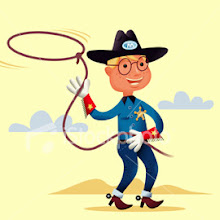What a Naisu Language
Much of this week’s focus in class has been on reading and spelling of katakana words and texts. A devilishly tricky script to decipher, かたかな, virtually a language in itself, is to foreign terminology what the best toilet rolls are to sh*t: ultra-absorbant. At their most inventive, the Japanese warp imported words into new hybrid expressions, with meanings sometimes impenetrable to the exporters.
This has given rise to such memorable exclusive-to-Japanese phrases asマイブーム (‘myboom’, defined on the invaluable http://jisho.org/ website as ‘something that a person is currently obsessed with or fascinated by’) and パラサイトシングル (‘parasite single’, a ‘single person who earns enough to live alone but prefers to live rent-free with his or her parents’), to give but two examples.
Taken to extremes, I guess that over-users of katakana in Japanese speech would sound like Borat (‘It’s naaiice’) doing a dialogue written by the late Miles Kington (http://en.wikipedia.org/wiki/Miles_Kington
/ http://news.bbc.co.uk/2/hi/7221918.stm ). (Q. “Avez vous un Golden Délicieux, madame.” A. “Non merci. Je préfère un Pippin de Cox.”)
But katakana figures heavily in our classroom language too. Teachers’ instructions incorporate a lot of cognates, most likely for ease of communication in Japanese. For example, sensei might see from a student’s リアクション ('reaction') that a listening comprehension is too ‘challengy’ (チャレンジ), circulate to do a チェック ('check'), maybe make some チェンジ ('chainji' / changes), suggest we take a メモ ('memo’). The リスト ('list') goes on and on.
At first sight it is regrettable that one of the English adjectives which the Japanese appear to have embraced most fondly is .. ‘nice’. It just happens that this is one of my least favourite words in English, especially when used to describe a thing, and in my two previous experiences of TEFL, in Romania and India, I always encouraged students to expand their adjectival range and look for alternatives. Its over-use in opinions is a trap I have seen foreign students fall into: for example, studying at Bradford University in the early 1990s, I distinctly recall exiting a cinema with a Spanish mother tongue student, who described the film as ‘nice’. We had just seen Schindler’s List. ‘Nice’ simply has no nuances and, in my book at least, should be avoided.
Incidentally, ‘nice’ also reminds me of the piss-take language which my sister and I invented in our teens to parody bland exchanges at the evening dinner table. (Family conversations grew more piquant as we found our respective, highly contrasting, paths to rebellion.) Again, I fully acknowledge John Major and his green peas (presented by Spitting Image) as an inspiration here. See for example http://www.megavideo.com/?v=FS396Y41.
As could be said of most of this blog, “I guess you had to be there” - which, alas, you weren’t (or, on second thoughts, if you’re actually reading this, you were!) - but we called our micro-dialect ‘lippy speak’ because it was peppered with what I think linguists call ‘plosives’ (best said breathily and annoyingly into a family member’s ear). Sample phrases include such gems as:-
‘Hmm, there’s nothing that I like more than a nice ripe piece of brie.’ (That one to be said as plosively as possible.)
‘Hmm, there’s quite an autumnal nip in the air.’
‘Hmm, there's nothing I like more than a sesame seed bap." (Be careful with that one.)
(for the fluent in lippy speak only) ‘That’s a moist blouse you’re wearing.’
But enough of these reminiscences. In katakana, unlike lippy speak, ‘nice’ loses it blandness. Indeed, Denshi jisho, the website I mentioned above, lists no less than nine entries beginning ‘naisu’ (ナイス), including a number of topic-specific compound nouns. Intriguingly, most seem to relate to golf or physical appearance. So, if you’re a womanising golfer – any names spring to mind? – there’s a good chance that you could make yourself understood in Japanese already, without any prior study, when talking about your twin pastimes.
Following this realisation, I decided to put the versatility of katakana to the test and unleash its awesome semantic force for today’s open-ended homework task, for which I created a wholly fictional diary entry in Japanese. (Credit to my unbelievably good teacher, Nie sensei, who will not be offended by it.) Note that it is a Japaneezy - but inaccurately and inconsistently romanised for ease of reading - English version of my original, flawed Japanese, but I have included the full katakana as well. I hope you find it a ‘naisutorai’ ナイストライー.
Because I’m a トーナメントプロ tornamentopuro, I’ve come to Japan for the マスターズゴルフMasutaGorufu.
Today, at the ゴルフコースgorufucourso, when I’d just played a チップショットchippushotto, I saw a グッドルックス‘goodolooksu’-having, ナイスバデイnicebady グルーピーguroupie. In the クロスバンカー curossbunker, she kindly madeアプローチan appuroachy to me.
ナイスショット “Naisushotto” she said. Please show me your インサイイドアウト‘Insideouto’ [inside out; swinging golf club with an inside out motion]. After I’d done her a a ナンバー (number / chatted her up), we made a プランpulan. In the evening she would come to my コンドミニアム condominyamu for a キャステイングセレックション‘kyasting serection’ . I thought I’d made a ナイスチョイス naisu chyoisu.
We played ポーカーpoker, had a パーテイ party and a バイキング‘baiking’ buffet and made some ノミューニケーション‘nommunication’ [a Japanese slang pun on ‘nomu’ – to drink]. Then she told me I was a ナイスミドル‘naisumiddle’ (attractive middle-aged man).
But it was aトラップ torappo. Next to the フランスまど ‘Furance window’、a リポーター riporta and a カメラマンcameraman were waiting. Because it was a big シャタッターチャンス shutterchansu’, the cameraman took many スナップショット‘snappushotto’.
On the next day, when I read the ニュースnewsu ヘッドラインheddoline, I did a パニック paniku. ‘スキャンダルSkandaru – gorufo puro’s セクシャルハラスメントsexsha harasumento’ it read. The end of the ツアー tsuour had a バッドエンドbaddoendo so I left it.
And because I want to become a ナイスガイ‘naisugai’, I’m now doing セラピー serapi.
Subscribe to:
Post Comments (Atom)




わはははは。上手だね!今からマークさんは"カタカナさま"になった。笑
ReplyDeleteダニエル
わははははは!ナイスジョッブ!今日からマークさんは”カタカナさま”になっただね。笑い
ReplyDeleteダニエル